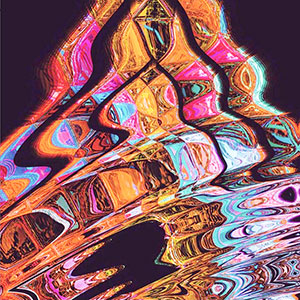 *
*
I know many people have glitches in their work. But here is an artist who celebrates them. Have if you will, one Jael Whitney.
Doug Holder: First off, how has it been for you working as an artist in the “Paris of New England” Somerville, MA?
Jael Whitney: I love living and working in one of the communities with the highest per-capita of creatives in the United States. I have found that the artistic community here is very welcoming, and a lot of my opportunities to exhibit have come from people saying my name in rooms where I wasn’t present.
DH: You are a practitioner of Glitch art. One could say your work is full of glitches. In laymen’s terms what is Glitch art—are you trying to see the wildness behind the tangible, ordered world?
JW: I like that description. I often describe my work as w3rmwood as utopian and apocalyptic visions of the future through creative destruction of data. Readers can also try it out for themselves by downloading apps like Glitch Lab or Mirror Lab.
DH: You identify yourself as a member of the Choctaw Nation of Oklahoma. How has Native American culture, spirituality, music, etc., informed your own work?
JW: I think about the relationship between indigeneity and technology a lot. One of the pieces I’ve attached is one that I’m working on for the Indigenous Student Center at MIT. I created it by glitching a photo I took when some of my Indigenous Communities Fellows were meeting with indigenous MIT students at the Center. In some ways our survival in these lands is a “glitch” – colonialism didn’t want us to be here, but we still are.
DH: Why should we view your work?
JW: Glitch Art is an emerging form of digital art that explores the intersection between technology and aesthetics. There are several active glitch artists in the Greater Boston area, including Allison Tanenhaus and Deb Step. I would check them out too so readers can get a broader sense of what “glitch art” can be.















Reader Comments